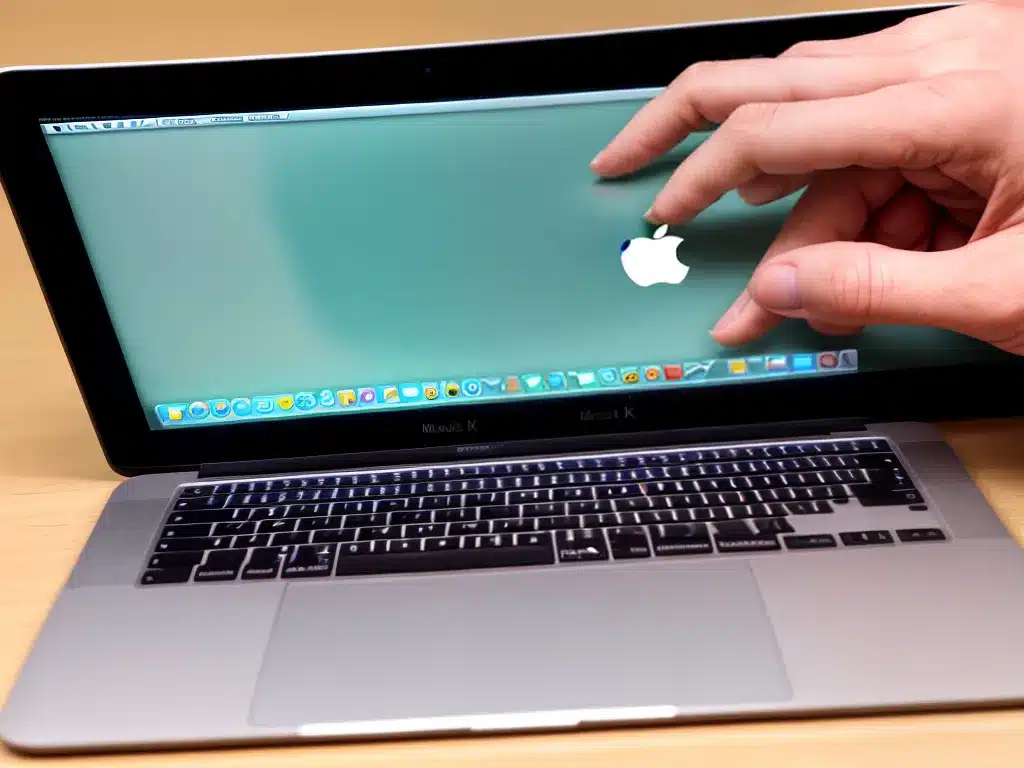
The trackpad is an essential part of using any MacBook. It allows you to move the cursor and perform gestures to control your laptop. However, like any hardware component, the trackpad can sometimes stop working properly. The good news is that there are several troubleshooting steps you can take to try and fix a faulty or unresponsive MacBook trackpad.
Determine If It’s a Software or Hardware Issue
The first thing to do is try and isolate if the issue is a software problem or a hardware failure.
-
A software issue with the trackpad could be caused by an outdated driver, system preferences being incorrectly set, or a software conflict. These types of problems can often be resolved with software tweaks.
-
A hardware problem is trickier to diagnose. This could involve a loose trackpad connection, a faulty trackpad controller, or even liquid damage. Hardware issues typically require replacement parts to fully resolve.
Here are some signs that may indicate a hardware failure:
- The trackpad has visible damage – such as cracks, dents, or liquid spills on the surface.
- The trackpad makes no response at all – no cursor movement or clicks registered.
- The cursor moves but there is no click feedback.
- You get a hardware error message related to the trackpad.
If you suspect a software issue, move on to the troubleshooting steps below. But for suspected hardware failure, you may need to get the trackpad physically repaired or replaced.
Troubleshoot Trackpad Software and Settings
If the trackpad issue appears to be software-related, here are some things to check:
Update Drivers and macOS
- Go to System Preferences > Software Update to install the latest macOS updates.
- Check the trackpad driver is up-to-date. Get updated drivers from the Apple website or your MacBook manufacturer.
Updating software and drivers is one of the easiest fixes for trackpad problems.
Verify Trackpad Settings
- Open System Preferences > Trackpad and check the settings.
- Toggle settings like tap to click, scrolling, and gestures on and off to test the trackpad response.
- Try adjusting the tracking speed or cursor size to improve usability.
- Check the Force Touch pressure sensitivity option if applicable for your model.
Erroneous settings can sometimes cause trackpad squirrelliness. Resetting to defaults may help.
Check for App Conflicts
- Determine if the issue is isolated to certain apps. Does the trackpad misbehave only in a single program?
- Try quitting and reopening the problematic app.
- Check for trackpad related plugins or accessibility settings turned on just for that app.
- Update the app to the latest version available.
An app bug or conflicting program settings can manifest as trackpad difficulties.
Reset NVRAM and SMC
For deeper software troubleshooting, try resetting the MacBook’s NVRAM and SMC:
- NVRAM stores keyboard/trackpad preferences and can get corrupted.
- The SMC manages hardware integration and low level functions.
Resetting these systems can clear out any problematic settings and refresh the MacBook hardware integration.
Look up specific key combinations for resetting NVRAM and SMC on your particular MacBook model.
Get A Trackpad Hardware Repair
If you’ve exhausted all the software troubleshooting steps, the issue likely requires hardware repair or replacement. Here are your options:
Replace the Trackpad
- On newer MacBooks, the trackpad module is designed to be replaced. This involves removing the battery and disassembling the lower MacBook case.
- Apple and authorized service centers can perform full trackpad replacements. The part cost is $150+ for most models.
- You can also buy MacBook trackpad replacement kits online and do it yourself following online repair guides.
Replacing a faulty trackpad may be the ultimate solution for stubborn hardware issues.
Get A Third Party Repair
- Local electronics repair shops and mobile technicians can also perform MacBook repairs.
- A store or technician replacing just the trackpad saves money over going to Apple.
- Research the repair shop reputation before choosing a third party repair service.
Third party repair is an affordable alternative if you feel comfortable letting someone else open up your MacBook.
Contact Apple Support
- At an Apple store or authorized service provider, Apple technicians can run diagnostics and replace any faulty components.
- AppleCare+ extended warranty holders get repair discounts and coverage for issues like a failing trackpad.
- Without warranty, Apple trackpad repairs start around $129 plus parts cost.
Apple knows MacBooks inside out and will identify any underlying issues – for an Apple premium price.
Prevent Future Trackpad Problems
To avoid ongoing trackpad headaches, here are some maintenance tips:
- Use a keyboard cover to prevent dirt buildup around keys that can interfere with the trackpad below.
- Don’t eat or drink over the MacBook to prevent liquid damage to trackpad hardware.
- Keep OS and apps updated to prevent software conflicts.
- Back up data so you aren’t worried about getting the MacBook repaired when needed.
- Consider AppleCare+ coverage for cheaper repairs after the standard 1 year warranty.
Avoiding debris buildup, liquids, and software issues will go a long way towards keeping your MacBook trackpad working smoothly.
Conclusion
With software tweaks and resets, thoughtful hardware replacement, or professional repair, you should be able to get an unresponsive MacBook trackpad working properly again. Pay attention to the details of the issue to determine if it’s a software glitch or hardware failure. With some targeted troubleshooting, you’ll be using your MacBook trackpad comfortably again in no time.












